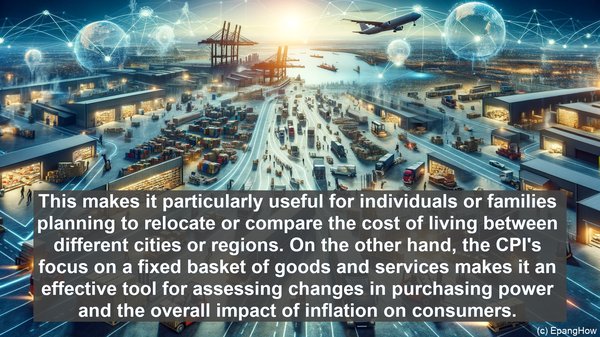Introduction: The Significance of Economic Indicators
Hello everyone, and welcome to today’s article. When it comes to measuring economic trends, there are several indicators that play a crucial role. Two such indicators are the cost of living index and the consumer price index. While they may seem similar at first, they serve distinct purposes and provide unique insights. In this article, we’ll delve into the differences between these two indices, exploring their methodologies and applications. So, let’s get started!
Defining the Cost of Living Index
The cost of living index, often abbreviated as COLI, is a measure that quantifies the average expenses required to maintain a certain standard of living in a particular geographic area. It takes into account various factors such as housing, transportation, healthcare, groceries, and more. The index is usually expressed as a percentage, with a baseline of 100 representing the national average. A COLI value above 100 indicates a higher cost of living, while a value below 100 suggests a lower cost of living.

Understanding the Consumer Price Index
On the other hand, the consumer price index, commonly known as CPI, primarily focuses on tracking changes in the prices of a fixed basket of goods and services over time. This basket represents the typical purchases of an average consumer. By monitoring price fluctuations, the CPI provides insights into inflationary trends. Similar to the COLI, the CPI is also expressed as a percentage, with a designated base year serving as the reference point.
Different Methodologies, Different Insights
One of the key distinctions between the COLI and the CPI lies in their methodologies. The COLI takes a comprehensive approach, considering a wide range of expenses. This makes it particularly useful for individuals or families planning to relocate or compare the cost of living between different cities or regions. On the other hand, the CPI’s focus on a fixed basket of goods and services makes it an effective tool for assessing changes in purchasing power and the overall impact of inflation on consumers.

Applications and Limitations
Both the COLI and the CPI have their applications and limitations. For instance, the COLI is often used by employers to determine appropriate salary adjustments for employees based on location. It is also valuable for policymakers when formulating strategies related to housing, transportation, and other aspects of the economy. The CPI, on the other hand, is frequently referenced by the central banks and government agencies to gauge inflation rates and make informed monetary policy decisions. However, it’s important to note that while these indices provide valuable insights, they may not capture the full range of economic nuances, and their accuracy can vary based on the specific context.
